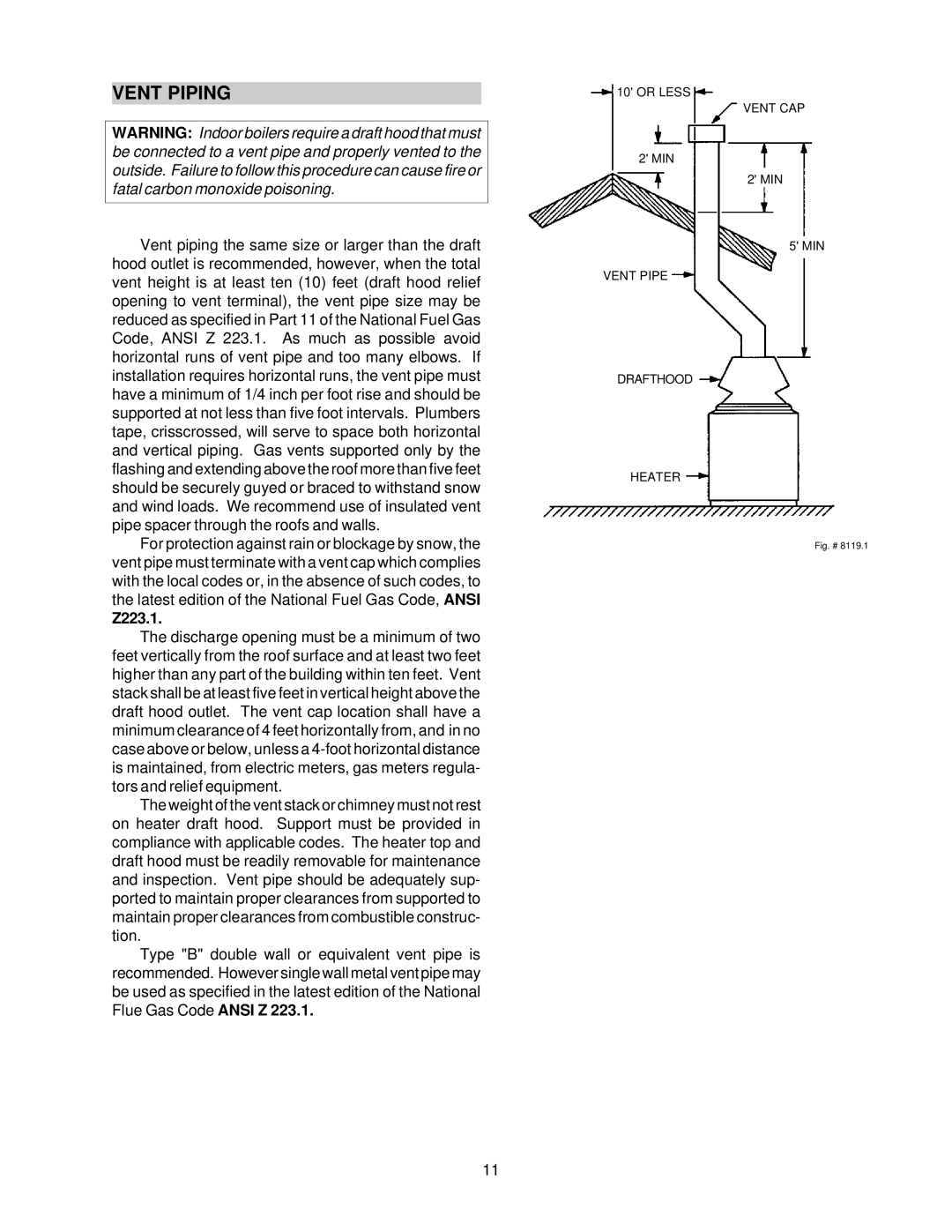105B specifications
Raypak 105B is a well-engineered boiler designed for various heating applications. Known for its efficiency and reliability, the Raypak 105B is a preferred choice among professionals in both residential and commercial settings.One of the main features of the Raypak 105B is its compact design. Measuring in at a size that allows for easy installation, it is ideal for locations where space is at a premium. The unit's lightweight materials contribute to a reduced load on structural components of buildings, making it an efficient option for retrofits and new installations alike.
The Raypak 105B operates on advanced technology that ensures optimal performance and energy efficiency. The unit boasts a high thermal efficiency rating, which translates to lower operational costs for users. Its innovative control system monitors and adjusts the heating output, ensuring that the boiler operates at peak efficiency while maintaining comfort.
Another significant characteristic of the Raypak 105B is its built-in hydrostat. This feature automatically controls water temperature, providing a safeguard against overheating and improving overall safety. The unit's durable stainless steel heat exchanger enhances the longevity of the product while also resisting corrosion, a common issue in boiler systems.
In terms of environmental considerations, the Raypak 105B is designed to meet or exceed industry standards for emissions. This not only helps users comply with regulations but also contributes to a reduced carbon footprint. Additionally, the natural gas or propane options add versatility in terms of fuel choice, catering to a wide range of applications.
Ease of maintenance is another advantage offered by the Raypak 105B. The unit is designed to provide straightforward access to key components, minimizing operational downtime when servicing is needed. This thoughtful design element supports both residential and commercial needs, ensuring reliability in various settings.
In summary, the Raypak 105B stands out due to its compact design, high thermal efficiency, advanced control systems, and robust safety features. With its focus on longevity, ease of maintenance, and environmental compliance, the Raypak 105B continues to be a leading choice for efficient heating solutions in diverse applications. Its reputation for reliability makes it a trusted option for those in need of dependable heating solutions.

